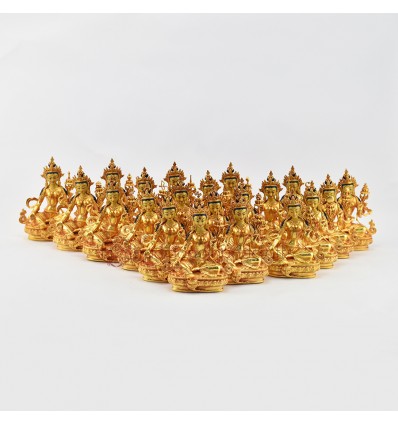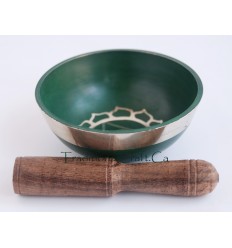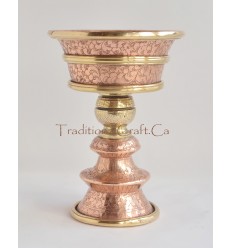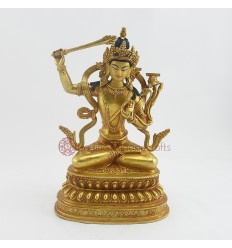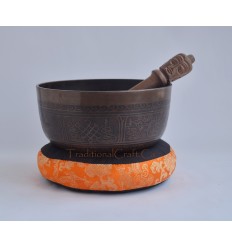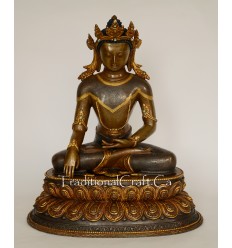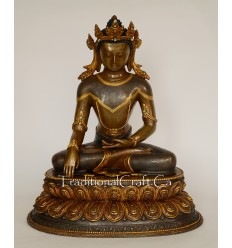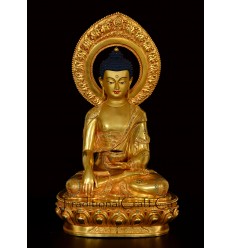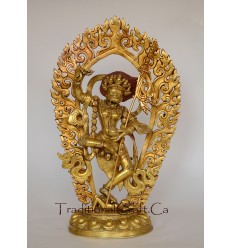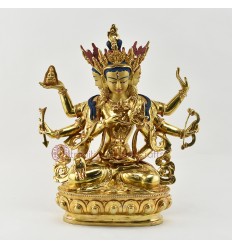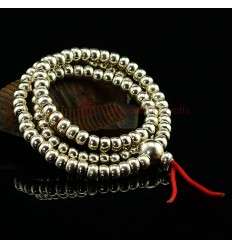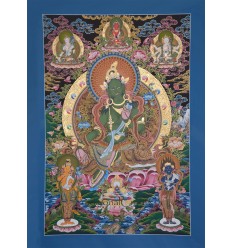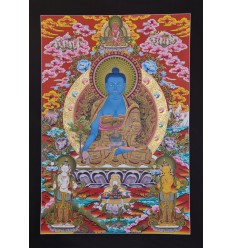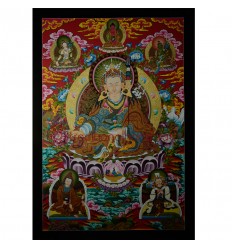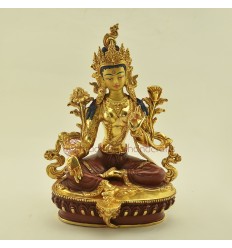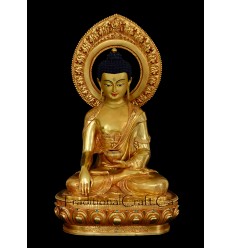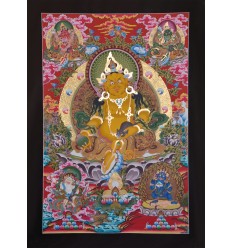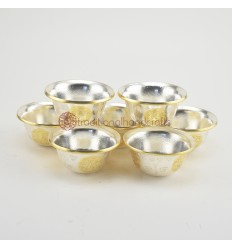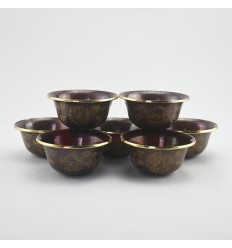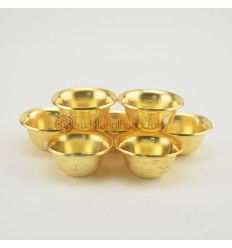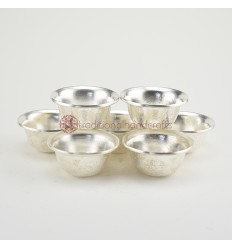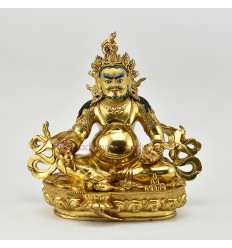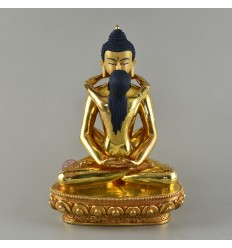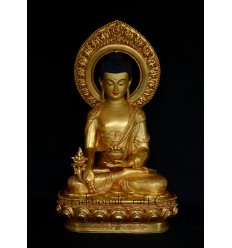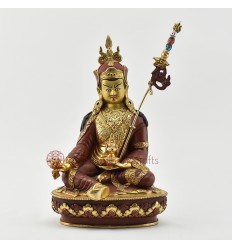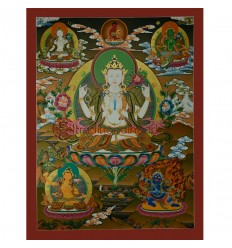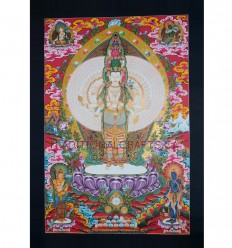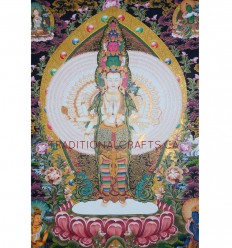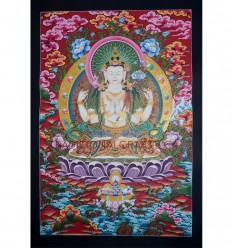No products
Product successfully added to your shopping cart
There are 0 items in your cart. There is 1 item in your cart.
Machine Made Copper Alloy with Gold Plated and Hand Painted Face 4.25" 21 Tara Statues Set
761768128039
New
Fine Quality Tibetan Buddhist Religious Copper Alloy with Gold Plated and Hand Painted Face 4.25" 21 Tara Statues Set Statue from Patan, Nepal for Shrine / Altar / Monastery
1 Item
Warning: Last items in stock!
21 Tara Statues Set
|
Name |
21 Tara Statues Set |
|
Height |
4.25” |
|
Width |
3.5” |
|
Depth |
2.25” |
|
Material |
Lost Wax Method, Copper Alloy with Gold Plated and Face Painted |
|
Actual Weight |
5.064 Kg. |
|
Ships From |
Patan, Nepal |
|
Shipping Provider |
Express Shipping Service |
|
Shipping Time |
Usually ships within 48 hours. Allow 5 – 7 business days for delivery worldwide. |
|
Insurance |
Insurance is included in the shipping cost. |
The Twenty-One Taras: Embodiments of Compassionate Activity
The 21 Taras are manifestations of the female Bodhisattva Tara, a significant deity in Tibetan Buddhism. Each Tara embodies a unique quality and aspect of compassion and protection, and they are invoked for different purposes and spiritual practices. Tara is considered to be a savior who helps practitioners overcome obstacles, fears, and challenges in their spiritual journey.
Origin and Significance
Tara is believed to have originated from the tears of Avalokiteshvara (Chenrezig), the Bodhisattva of Compassion, or from a lotus that sprang from his tears. She vowed to always incarnate as a female and to work for the enlightenment of all sentient beings. Tara’s practice is deeply rooted in the Mahayana and Vajrayana traditions of Buddhism.
The forms of 21 Tara are:
Each Tara has a specific color, posture, and iconography, symbolizing different aspects of compassion and enlightened activity. Here is a brief overview of each:
Nyurma Pamo {Red}
Loter Yangchenma {White}
Sermo Sonam Tobche {Golden Yellow}
Tsugtor Namgyalma (Ushnishaviyaha) {Golden Yellow}
Wangdu Rigje Lhamo (Kurukulle) {Red}
Jigje Chenmo {Red}
Zhengyi Mithumba {Black}
Zhengyi Migyalma Pamo {Dark Red}
Sengdeng Nagchi {Blue}
Jigten Sumle Gyalma {Red}
Phagma Norter Drolma {Golden Red}
Tashi Donje {Gold Color}
Yulle Gyalma {Red}
Thronyer Chenma {Black like; Dense Rain Clouds}
Rabzhima {White like; full Moon}
Rigngag Tobzhom {Red}
Pagme Nonma {Golden Red}
Maja Chenmo {White}
Dugkarmo {White}
Ritro Loma Gyonma {Yellow Red like; Saffron}
Lhamo Ozer Chenma {White}
Practices and Rituals
The 21 Taras are manifestations of the female Bodhisattva Tara, each embodying different aspects of compassion, protection, and healing. These revered deities play a crucial role in Tibetan Buddhism, offering practitioners a path to invoke their blessings and guidance. The practices and rituals associated with the 21 Taras are rich and varied, encompassing a variety of methods aimed at invoking the specific attributes and qualities of each Tara.
Practitioners engage in mantra recitation, visualizations, praises, homages, offerings, pujas, and guided meditations to connect with the compassionate and protective energies of the 21 Taras. Each Tara represents a unique aspect of Tara's enlightened activity, offering protection from various dangers and obstacles that sentient beings face. The rituals are designed to invoke the swift saving and healing activities of Tara, promoting well-being, spiritual growth, and the removal of obstacles.
Through the recitation of mantras, visualization practices, and offerings, practitioners seek to establish a profound connection with the 21 Taras, drawing upon their transformative energies to navigate the challenges of life and progress on the path to enlightenment. The essence of these practices lies in invoking the compassionate and protective energies of Tara, ensuring that practitioners are guided and supported on their spiritual journey.
Visual Representations
The visual representations of the 21 Taras are not limited to these descriptions, as each Tara has its unique name, praise, mantra, sadhana, and a wealth of symbolism, qualities, and rituals. The practices and rituals associated with the 21 Taras are designed to invoke their blessings and guidance, promoting well-being, spiritual growth, and the removal of obstacles.
In Tibetan Buddhist art, the 21 Taras are commonly depicted in the form of statues, which serve as powerful objects of devotion and meditation for practitioners. These three-dimensional representations of the Tara deities allow devotees to directly engage with their enlightened qualities and energies, fostering a deep connection through visualization, offerings, and ritual practices. Alongside the statues, the 21 Taras are also extensively portrayed in thangkas, which are two-dimensional paintings that serve as visual aids for spiritual practice. These thangkas are meticulously crafted by skilled Tibetan artists, who use intricate brushwork, precise detailing, and a variety of natural pigments, including precious minerals and gold, to create these sacred works of art.
The 21 Taras are also associated with the attainment of Enlightenment, as they represent the 21 techniques taught by Buddha to achieve Enlightenment. According to tantric teachings, the human body has 21 knots that obstruct or block our channels, and through practice, as we release each of these pairs of knots, we obtain a specific experience or realization. After releasing all of the 21 knots, we are known as enlightened beings, having attained Buddhahood.
The visual representations of the 21 Taras are diverse and rich in symbolism, reflecting the various aspects of Tara's enlightened activity. These representations serve as a means to connect with the compassionate and protective energies of Tara, guiding practitioners on their spiritual journey toward Enlightenment.
Conclusion
The 21 Taras are a profound and rich aspect of Tibetan Buddhism, offering a comprehensive framework for understanding and cultivating compassion, protection, and spiritual growth. Each of these revered manifestations of the Bodhisattva Tara represents a specific quality or activity, providing practitioners with a multifaceted approach to overcoming obstacles and achieving enlightenment.
Through the practices associated with the 21 Taras, such as mantra recitation, visualization, and ritual offerings, devotees seek to embody the enlightened qualities of these compassionate deities. By invoking the blessings and guidance of the Taras, practitioners can purify their minds, accumulate merit, and develop the wisdom necessary to liberate themselves and all sentient beings from the suffering of samsara.
The 21 Taras are not merely abstract concepts, but are also extensively depicted in Tibetan Buddhist art, both in the form of statues and thangka paintings. These visual representations serve as powerful objects of devotion and meditation, allowing practitioners to directly engage with the energies and qualities of each Tara.
Through the practice of the 21 Taras, devotees can cultivate a deep connection with the feminine aspect of the enlightened mind, embodied by Tara. This connection can provide a sense of refuge, comfort, and inspiration on the spiritual journey, as well as the courage and determination to overcome obstacles and work for the benefit of all beings.
The 21 Taras offer a rich and multifaceted path to enlightenment, providing practitioners with a diverse array of qualities and blessings to draw upon in their spiritual practice. By engaging with these profound teachings and practices, devotees can transform their minds, cultivate compassion, and work towards the ultimate goal of liberating all beings from suffering.
About this Sculpture
Expertly cast from copper alloy using the lost wax method, with gold plating and a meticulously hand-painted face, this exquisite set of 21 Tara statues is a stunning display of craftsmanship. Each statue in the set is finely hand-carved, showcasing all the intricate details, including the attributes she holds.
These sculptures were individually handcrafted in Patan, Nepal, by master artisans of the Shakya clan, renowned as some of the finest craftsmen in the world. These artisans are the modern heirs to a centuries-old tradition of creating sacred art for temples and monasteries. Their exceptional metalworking techniques, passed down from generation to generation since ancient times, continue to uphold the revered legacy of their craft.
No customer comments for the moment.


